We will have much more to say about the Q Acoustics 5050 Loudspeakers next week when our in-depth review goes live, but there is no question that we had very high expectations for these loudspeakers.
Having owned the Q Acoustics 3050 for almost 3 years and loving the 5040 which have become a permanent part of my loudspeaker collection, I suspected that the 5050 would not disappoint.
But do they offer just more of the 5040?
You might be surprised to learn that whilst they offer some similar characteristics — they are not what I expected.
We will have more to say about their performance below the technical specifications, but understand that something is very different about the 5050 and the shift in tonal balance and presentation makes them one of my favorite loudspeakers priced below $4,000 right now.
One could build a $10,000 around them and be satisfied for life as long as you have the proper amount of space for them and are willing to shift your thinking somewhat.

The Q Acoustics 5000 Series have been an unqualified success and for good reason — they work well with a wide range of amplifiers and it is very hard to argue with the value that they represent.
What makes the Q Acoustics 5050 unique is that it offers so much performance for under $2,000 — in a category with some excellent floor standing loudspeakers from DALI, PSB, Wharfedale, and KEF in the same price range.
The more we listen to products like the 5050, DALI Oberon 5, Wharfedale Evo 4.4 and Focal Theva N°2 — the clearer it becomes that music listeners don’t have to go broke in 2024 building a high-end audio system.
Having spent almost an entire year with the award-winning Q Acoustics 5040 and 5020, we waited with bated breath for the launch of the flagship 5050; although we did have an advance preview of it at CAF 2023.
We also had the opportunity to discuss the new M40 and 5050 with Q Acoustics’ PR Manager, Nick Renshaw, and Sales and Marketing Director, Jamie McKay, on the eCoustics podcast which you can listen to here.

The 5050 joins the 5000 family, comprising of the 5010 bookshelf ($749/pair), 5020 standmount ($899/pair), 5040 floorstander ($1,499/pair), with the 5090 center channel ($599) completing the line-up for a home cinema speaker set-up.
As with the entire 5000 series, the 5050 arrive in a choice of four modern but classic finishes that complement any living space, including the introduction of a new stylish lighter wood veneer. High quality finishes include Satin Black, Satin White, Santos Rosewood and Holme Oak.
The 5050 floorstanding model comes with stylish solid aluminium stabilizers that feature top adjustable spikes for easier levelling adjustment, while durable low-profile speaker terminals provide a tidy appearance, enabling the speaker to be placed closer to the back wall if required.

Technical Specifications
- Bass unit: 2 x 150 mm (6.0 in)
- Treble unit: 1 x 25 mm (1.0 in)
- Frequency response (-6dB): 37 Hz – 30 kHz
- Nominal impedance: 6.0 Ω
- Minimum impedance: 3.0 Ω
- Sensitivity (1m, 2.83V @ 1kHz): 91.8 dB/w/m
- Recommended amplifier power: 25-150 W
- Crossover frequency: 2.7 kHz
- Effective volume: 39.7 L
- Dimensions (HxWxD) 1017 x 386 x 336mm (40.0 x 15.2 x 13.2 in) including spikes and stabilizer
- Weight (per loudspeaker): 21.6 kg (47.6 lbs)
A Bissel Kishka?
For those who did not grow up in a Yiddish speaking household, that translates to “would you like a little piece of kishka?”
Deli mavens will chime in that there is no such thing as a “little piece of kishka” because even the smallest slice cooked in beef gravy could stop your heart faster than a few packages of cigarettes after running a marathon — but my bigger point is that a little bit of fat never killed anyone.

Except for the guy sitting across from me in 1982 at a Toronto Deli I will not name out of respect for the sandwich that he was consuming.
It was not my beloved Pancer’s in case anyone is wondering.

The only thing that ever died there was my dating life. Although the “new” me (I’ve lost 43 pounds over the past 8 months) owes a visit to that Toronto institution to someone very special when the time comes.
How does any of this apply to the Q Acoustics 5050?
To have a better understanding on their perspective and tonal balance, one really needs to read my comprehensive series of reviews on the 5040 first to have a benchmark.
Unlike the 5020, which I found to be extremely neutral sounding and incisive, the 5050 offer marginally less precision and a lot more kishka.
There is greater coloration in the sub bass, upper bass, and lower midrange and that gives almost everything you will listen to through them additional tonal weight and impact.
They hit harder, fill a larger space more easily (my den is 16′ x 13′ x 9′), and also come across as slightly laid back in comparison.
The clarity is still there, but male voices do not sound as thin (compared to the 5040) and bass notes come across as more natural sounding. The amplifier does not need to color rather neatly between the lines in this case.
What does that mean for system building?
Whereas the 5040 can sound completely different with every different type of amplifier and their neutrality makes them somewhat of a blank canvas that one can experiment with — the 5050 work better with something that is more neutral sounding and offers a slightly forward sounding presentation.

It also handles a lot of power without even flinching.
But that doesn’t mean that they need it.
The bass range on the 5040 is precise, quick, detailed, and well defined; its larger sibling offers slightly less precision and a lot more impact and weight from the sub bass through the upper bass.
My original comments about placement remain the same. Both speakers need room to breathe. They can overload a smaller room rather easily if you don’t pull them away from the corners and put 2-3′ of space between them and the wall behind them.
Both are exceptional at imaging.
The Fresser
Getting the source components correct with this loudspeaker is relatively easy at this point having tried so many with the 3050 and 5040.
My goal with this system was to keep the overall price below $10,000 — which did not prove to be very difficult.
The Pro-Ject Debut PRO or Rega Planar 3 turntables would be excellent choices for this type of system, or you could use your existing table if you already have one.

But one thing I would not do is stick with the stock phono cartridges that come with either table.
Both lean in the wrong direction.
In the case of the Debut PRO — invest in something better like the Sumiko Blue Point No.3 High Output which offers greater clarity, control, and top end energy and detail.
The new Rega Nd3 belongs on the Planar 3. End of story.
According to Rega, the Nd3 will offer between 5 and 6mV of output (which feels somewhat ambiguous) and requires 1.75 grams of tracking force. The headshell uses 3 points for attachment making it ideal for Rega’s own tonearms.
The new Nd3 is smoother, detailed. fast, and one of the best entry-level cartridges we’ve heard from anyone at this point.

Both cartridges benefit from a higher quality MM/MC phono pre-amplifier and the most obvious option (especially from the perspective of long-term system growth) is the Moon By SimAudio LP110 V2.
Both of my amplifier selections have above average MM phono sections, and the LP110 V2 should be considered as an upgrade for those who want to maximize the sound quality of the recommended cartridges.
Moon by SimAudio LP110 V2 ($599)
This very solid piece of engineering offers adjustability for almost every cartridge on the market and is dead quiet in its operation. The neutral tonal balance makes the LP110 V2 ideal for warmer sounding cartridges or low-output MCs. Music moves with a sense of purpose and the level of detail retrieval is superb for the asking price.
Digital?

Having spent considerable time listening to the new Cambridge Audio CXN100 Network Player (review forthcoming), there is no question that it works well with the 5040, and 5050 — but as long as the rest of the system is more neutral sounding with the flagship model loudspeakers.
Priced at $1,099, the new music streamer is just $100 more than the previous model, and offers more than a simple upgrade. It’s a complete mechanical redesign with new cutting-edge components and Cambridge Audio’s latest Gen4 StreamMagic module.
The digital-to-analogue converter (DAC) has been upgraded to the ESS ES9028Q2M SABRE32 Reference DAC, which can handle PCM digital signal inputs up to 32-bit/768kHz and DSD512, as well as MQA.
Spotify Connect, TIDAL Connect, Qobuz and Deezer are all built-in, offering easy access to a vast world of music and podcasts. High-resolution Internet Radio is also just a few taps away, courtesy of MPEG-DASH support.
CXN100 is Roon Ready, so Roon subscribers can see all content from TIDAL, Qobuz, iTunes library or digital downloads alongside each other in a seamless, user-friendly interface.
The Cambridge network player can be the ideal option for the 5050 loudspeakers, but the amplifier and preamplifier have to dial back the warmth in the bass and lower midrange or things lose some of their clarity, detail, and energy.
Unlimited Power?

When I reviewed the Naim NAIT 50 in December 2023, one of its most impressive moments came when I connected it to the Q Acoustics 3050i Loudspeakers that I have used in my dining room system for almost four years.
The 3050i can be a somewhat reticent sounding loudspeaker depending on the source equipment and amplification on the other end. The mid bass and midrange have more than enough impact and presence for my daily listening, but the treble is decidedly rolled off and it would be accurate to describe it as “overly polite” when it comes to its overall presentation.
Dull sounding gear need not apply ever in this scenario.
The NAIT 50 is an incredibly underrated piece of hardware and did a rather miraculous job of injecting some much needed energy in the 3050i without adding any hardness to the midrange and treble.
Can you drive the 3050i and the 5050 with only 25 to 30 watts of power?
The output increases to 40 watts into 4 ohms which is more than enough for the type of loudspeakers that will be paired with the amplifier.
Numbers don’t always tell the story and that was certainly the case with the NAIT 50 and 5050.
The NAIT 50 in a minimalist design that features 1 x MM phono input (RCA, 5mV), 2 x 5-pin DIN inputs, and a single 6.35mm headphone jack located on the front panel.
The amplifier is a brick and the all-metal construction inspired confidence from the first moment that I removed it from the packaging.
In the grand scheme of things, 10 pounds doesn’t sound like a lot but this is one solid amplifier. For many music listeners, it may be all that they ever need.
The binding posts are recessed receptacles that require banana pins; which worked perfectly with the multiple sets of Chord Company and QED loudspeaker cables I have in my collection.
The aluminum volume control feels sturdy and offers very smooth operation.
The power output of the NAIT 50 requires careful loudspeaker matching if one wants to fill a slightly larger space; the amplifier and loudspeaker combinations at home had zero issues filling the den (16′ x 13′ x 9′) and dining room (16′ x 10′ x 9′) with more than enough volume and impact.
Bass notes are never overly thick or sluggish through the NAIT 50 and whilst I would agree that the 5050 might need some additional shakshouka in its tuchas to feel more impactful, the NAIT 50/CXN100 combination gets very close.
The upper bass and lower midrange are superbly clean through the British box and male vocals get pushed slightly forward of the front plane of the loudspeakers and locked firmly in place.
The three British products work exceptionally well together.
Pacing is superb through the NAIT 50 and the darker tonal balance of the 5050 almost cries out for the clarity and top end energy of the Naim amplifier.

The other logical (and more affordable) option would be the Cambridge Audio Evo 150 Network Amplifier.
The Evo 150 offers a lot more power, a smoother sounding midrange and more robust sounding low end. The MM phono stage is also quite acceptable, although the Naim bests it on points in that category.
Both amplifiers offer a very strong sense of pacing and overall flow — the 5050 reminds me more of the 3050i when it comes to its overall presentation and I don’t see how anyone with either amplifier would be unhappy.
Do I like the 5050 more than the 5040?

That’s a hard question to answer from the perspective that they really don’t sound the same; the 5050 requires a more analytical sounding system to show off its obvious strengths and it certainly offers greater low end impact.
The 5040 feels like a canvas; and having listened to it with almost 14 amplifiers so far — it’s something that can paint in a wide variety of ways.
Listening to it with the Evo 150, Cambridge Edge A, NAD C 316BEE V2, NAIT 50, or Unison Research Triode 25 and Simply 845 offers a completely different perspective on the music you are listening to.
I will have more to say about the 5050 next week, but make no mistake — these are very fine loudspeakers at a surprisingly low asking price.
If your listening space is smaller than my den (16′ x 13′ x 9′), the 5040 make a lot more sense; especially because the 5050 will overload the room with too much low end response.
Q Acoustics continues to offer excellent products at prices that make me want to own nothing else.
Where to buy: $1,999/pair at Q Acoustics | Amazon
Related Reading




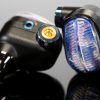
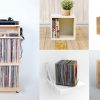


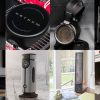


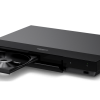
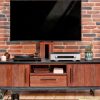










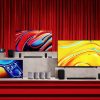

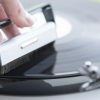
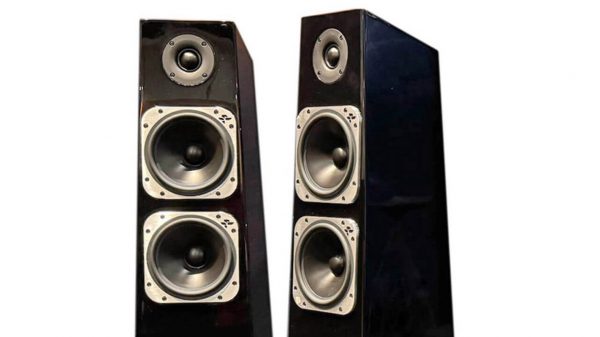
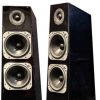

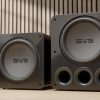
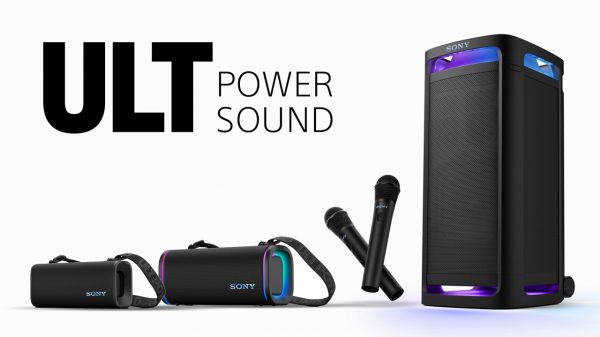
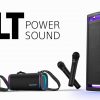













John
July 6, 2024 at 3:05 pm
Would the Rotel A14MKII Integrated Amplifier ($1,599.99) work? Is the Rotel S14 Powered Network Streamer an acceptable substitute at the sale price of $999? You mentioned that the S14 sounded different than the A14 but how?
On an unrelated but important note… Our thoughts and prayers remain with the people of Israel and Jews throughout the world on the 9 month eve of the Hamas attack. May no one forget nor become complacent as time passes. Also, may the innocent Palestinian people find just and peaceful representation that actually has their best interests at heart.
Ian White
July 15, 2024 at 12:02 am
John,
Sorry that I missed this in my absence.
Thank you for the kind words of support in regard to Israel. Much appreciated.
I’m not a fan of the S14. The interface is very clunky and I think the A14MKII is a better sounding unit on its own.
It does have enough power to drive the 5050 rather well depending on the size of your room. The bigger issue for me is the tonal balance and just how much control does it offer in the low end.
As I mentioned, the 5050 are darker sounding than the 5040 and the treble is not as aggressive. The low end response is significantly more robust and warmer sounding. The trade-off is that the 5040 delivers a bass range with less impact, but tighter lines and slightly better speed. Notes have a crisp edge which can be very effective depending the amplifier and music.
The 5050 needs something with rather firm grip from the sub bass through the upper bass and I (honestly) don’t remember because the amount of time that has transpired if the Rotel would be the right choice. The Cambridge Audio CXA Series and Evo 75 or 150 would be superb options.
Best,
Ian White